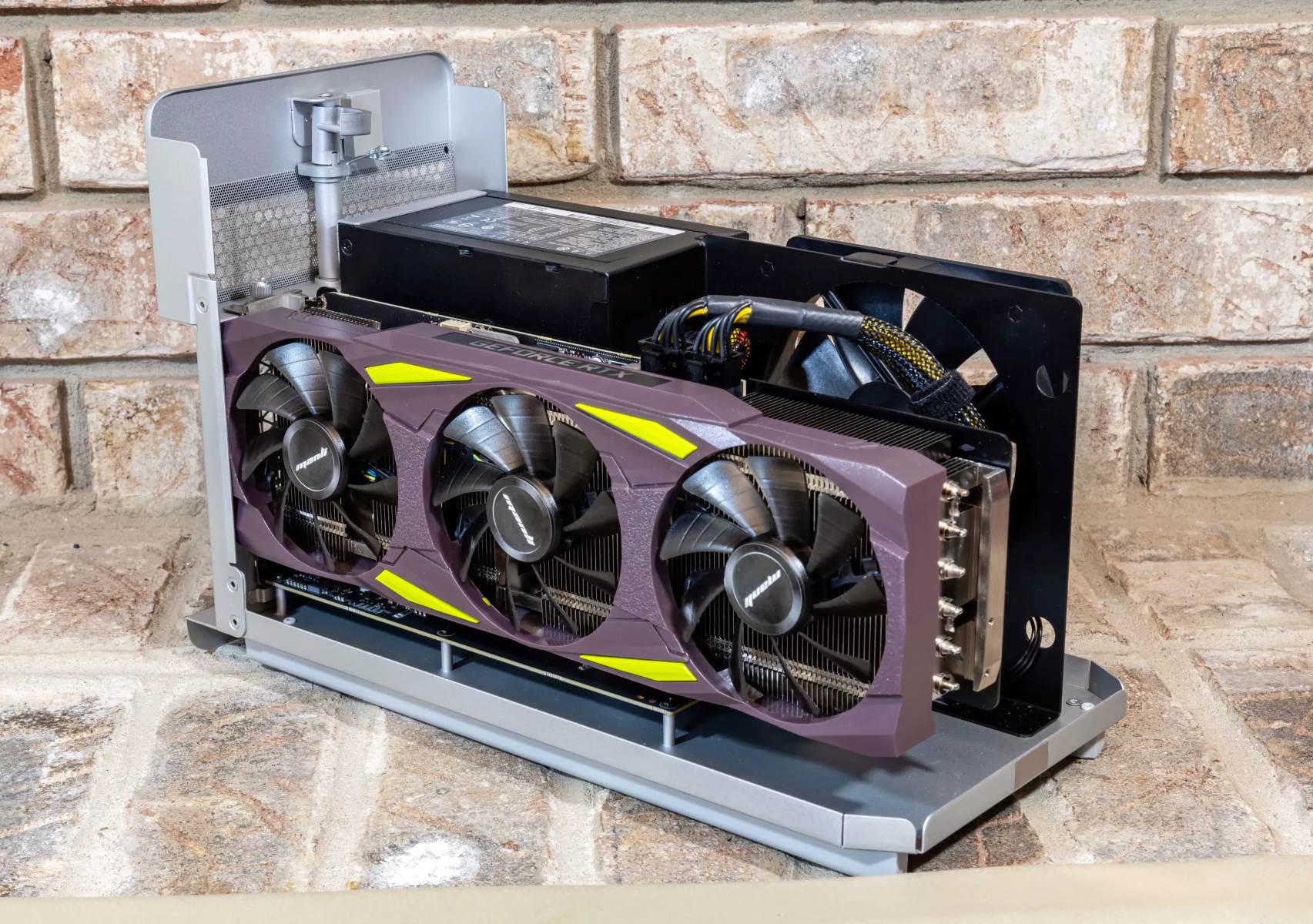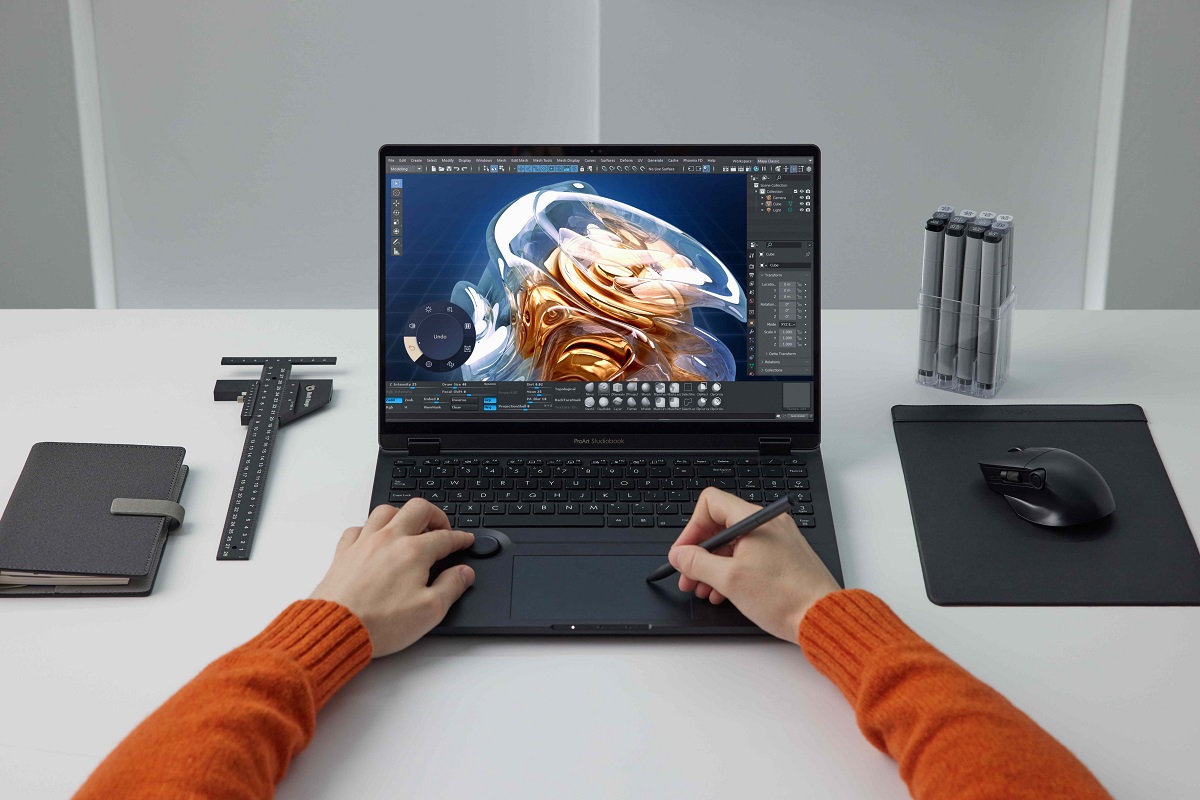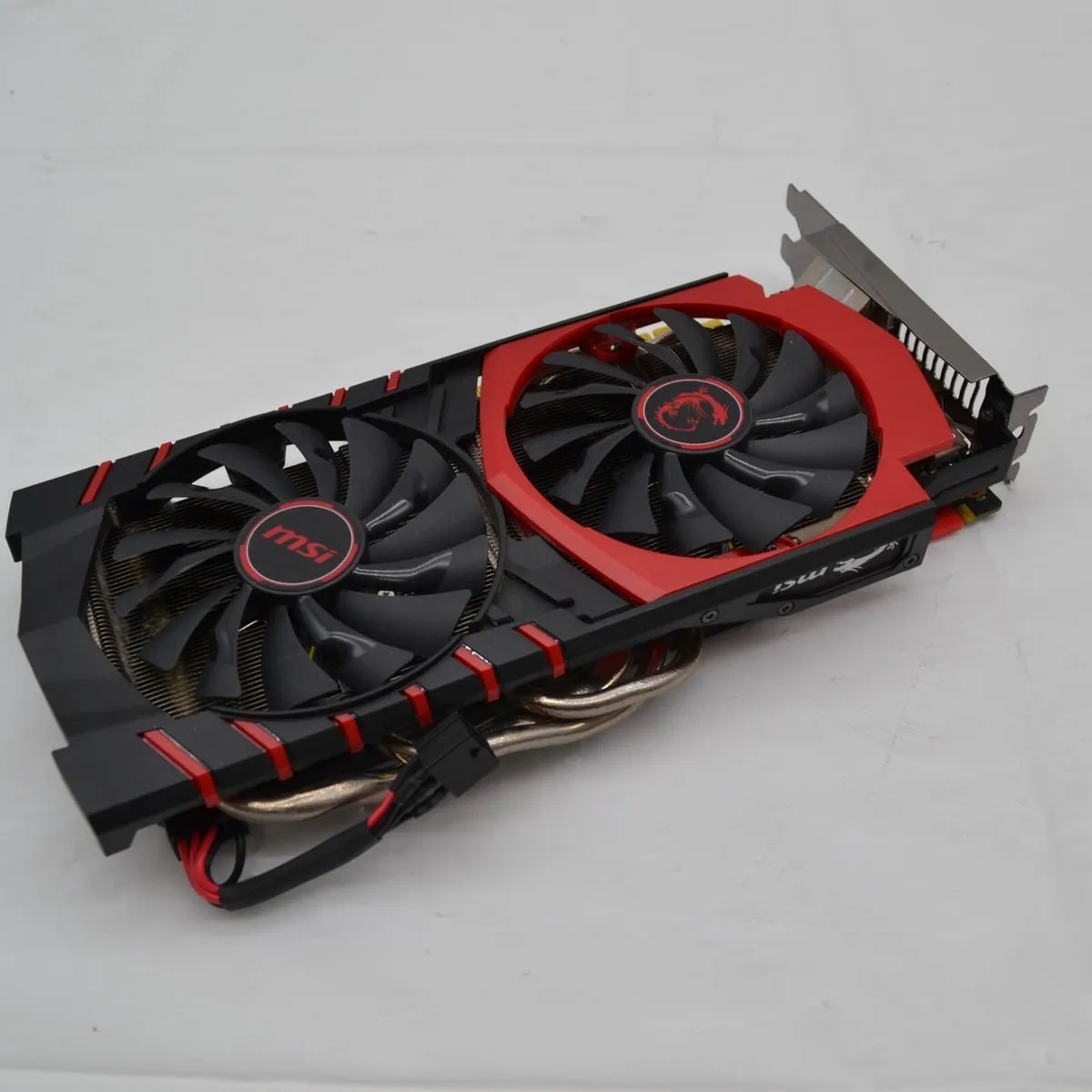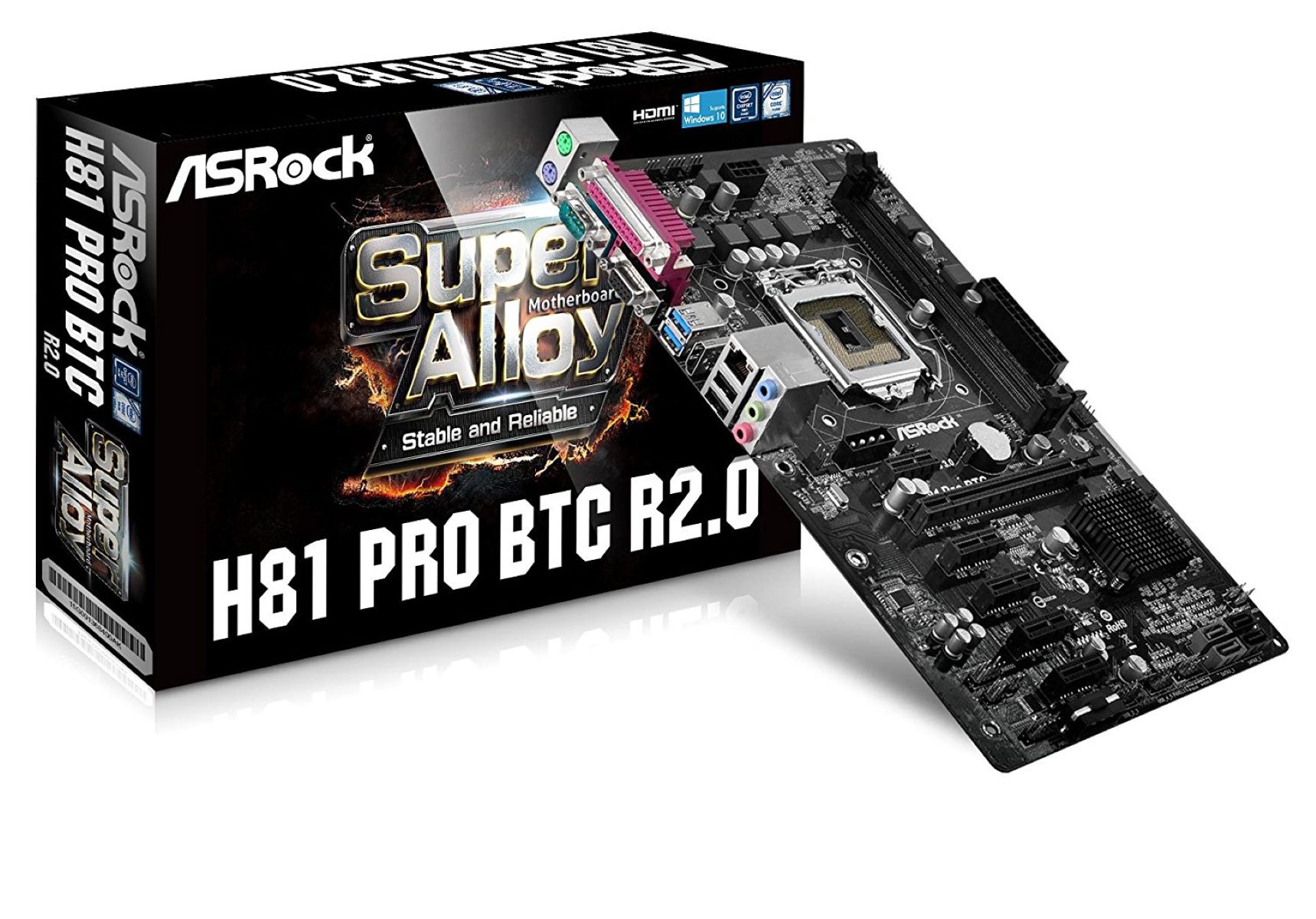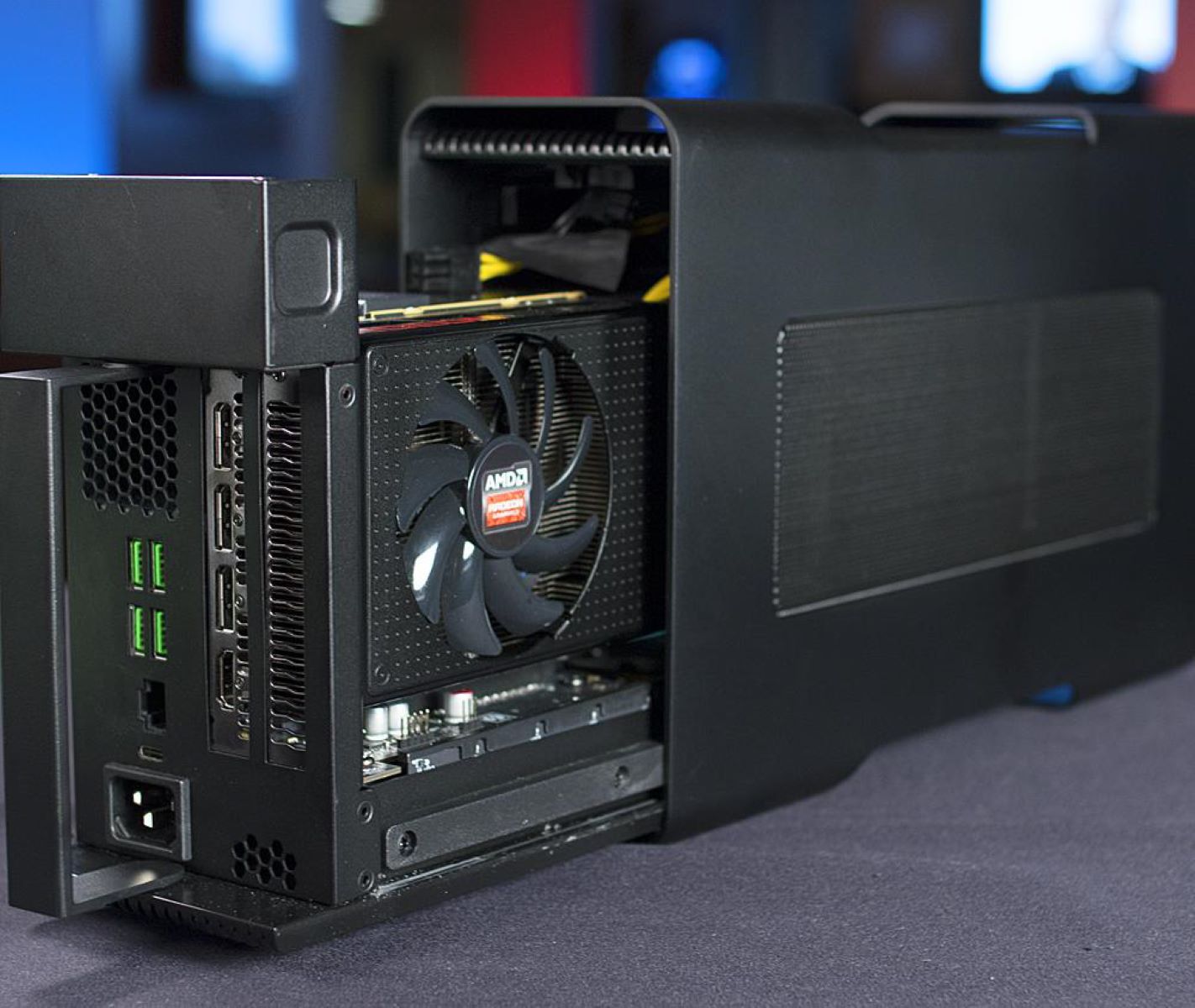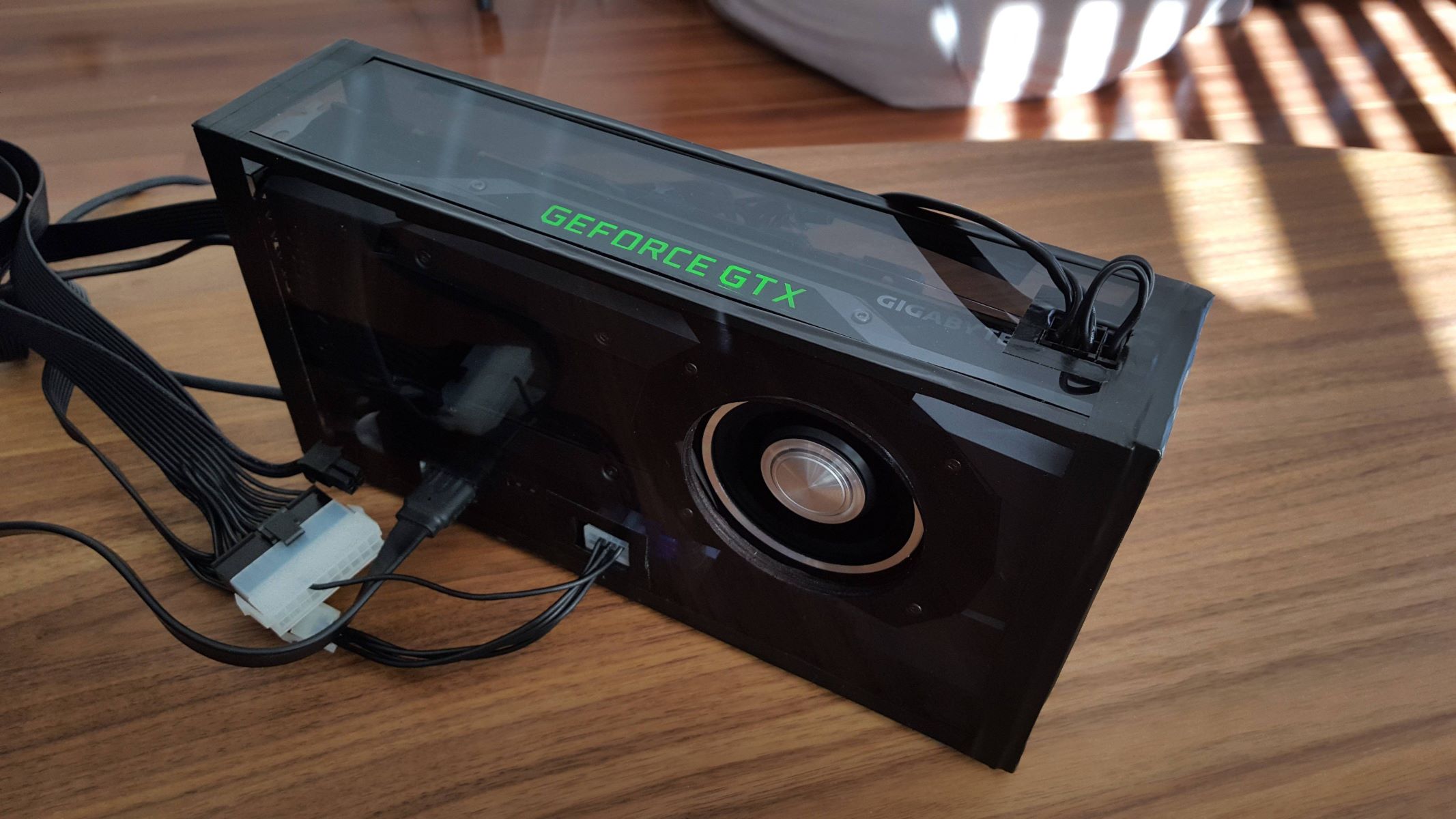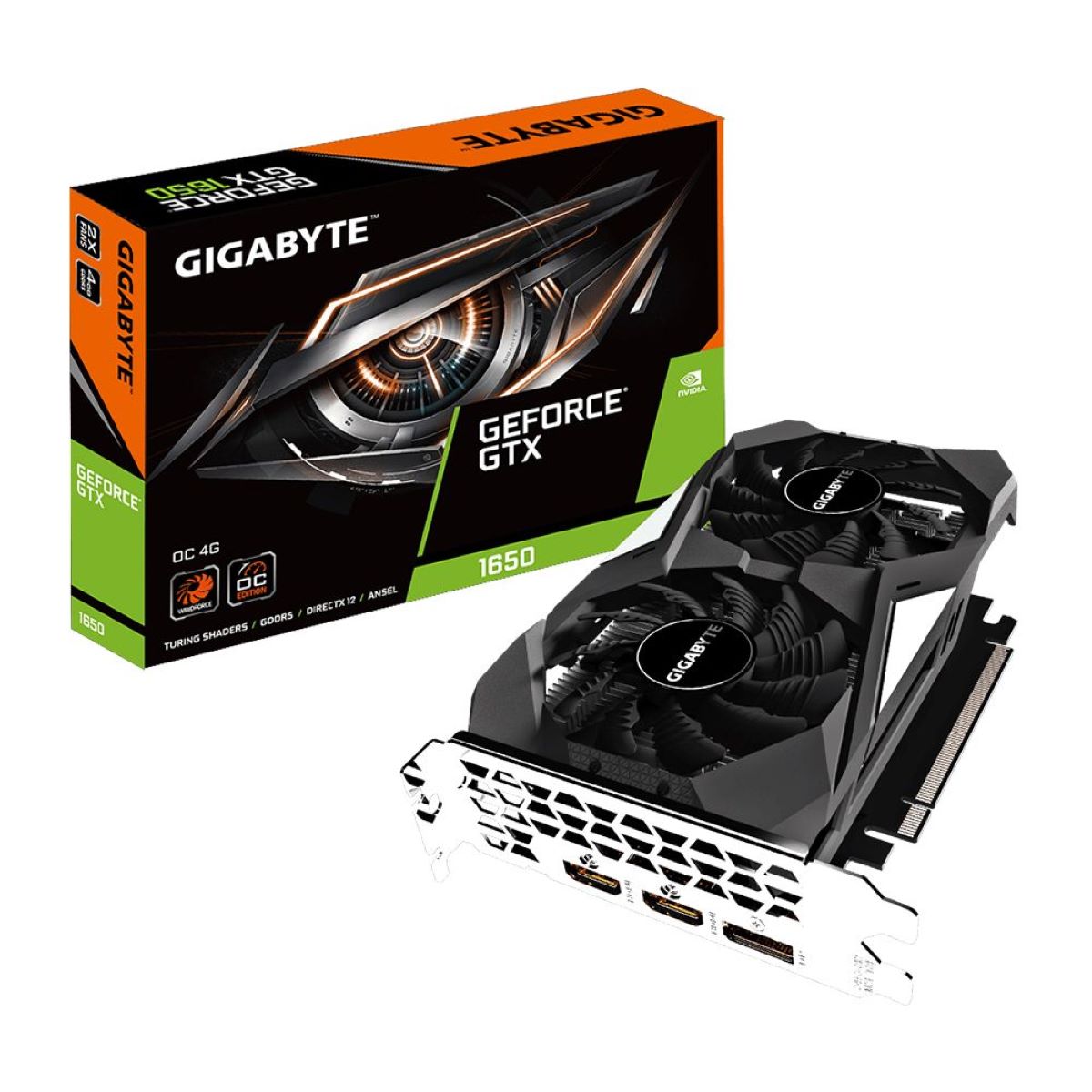Introduction
Graphics processing units (GPUs) have become an integral part of modern computing systems. These powerful processors are designed to handle complex graphical computations, making them crucial for tasks such as gaming, graphic design, video editing, and scientific simulations. Over time, GPUs have evolved, becoming more sophisticated and capable. One such advancement is the development of 10-core GPUs.
A 10-core GPU refers to a graphics processing unit that contains ten individual processing cores or units. These cores work together to handle and process data, resulting in faster and more efficient graphics performance. The increased number of cores allows for improved multitasking and parallel processing capabilities.
Compared to earlier generations of GPUs, 10-core GPUs offer a significant boost in performance and can handle more demanding tasks. With their advanced processing capabilities, these GPUs are capable of delivering stunning visuals, smooth gameplay, and accelerated computing performance.
In this article, we will explore the world of 10-core GPUs, discussing their features, benefits, and applications. We will also guide you through the factors to consider when choosing a 10-core GPU and provide examples and price ranges to give you a better understanding of their availability in the market.
What is a GPU?
A graphics processing unit (GPU) is a specialized electronic circuit that is designed to rapidly process and render images, videos, and animations. Unlike the central processing units (CPUs) found in computers, GPUs are specifically designed to handle complex parallel computations required for rendering visual data.
The primary function of a GPU is to take the graphical information from the CPU and transform it into images that can be displayed on a monitor or other output devices. It is responsible for rendering 2D and 3D graphics, handling vertex and pixel shading, and performing complex mathematical calculations required for tasks such as lighting effects, texture mapping, and geometry processing.
GPUs consist of thousands of smaller processing cores, each capable of executing numerous instructions simultaneously. These cores work together to process data in parallel, allowing for faster and more efficient graphical computations compared to CPUs, which typically have fewer cores optimized for sequential processing.
Modern GPUs not only excel at graphics processing but also have become essential for other computationally intensive tasks like machine learning, data analysis, and scientific simulations. Their parallel processing capabilities make them ideal for these tasks, as they can handle large amounts of data and perform complex calculations simultaneously.
In addition to their processing power, GPUs are enhanced with dedicated memory known as video memory, or VRAM. This high-speed memory allows for the quick storage and retrieval of graphical data, further improving performance and reducing latency.
Overall, GPUs play a vital role in today’s computing landscape, providing the necessary power and efficiency for tasks that require advanced graphics rendering and parallel processing capabilities. With their continued evolution, GPUs are becoming more powerful and are poised to shape the future of computing in various industries.
What is a 10 Core GPU?
A 10-core GPU, also known as a graphics processing unit, refers to a GPU with ten individual processing cores or units. Each core in a 10-core GPU is capable of executing instructions independently, allowing for parallel processing of data. The increase in the number of cores provides enhanced computing power and enables the GPU to handle more complex tasks with ease.
With a 10-core GPU, the parallel processing capabilities are significantly magnified, resulting in improved performance and efficiency compared to GPUs with fewer cores. This increased processing power translates into faster graphics rendering, smoother gameplay, and the ability to handle resource-intensive applications more effectively.
These 10-core GPUs are specifically designed for intensive tasks that require substantial computational power. Whether it’s rendering high-resolution graphics, performing complex simulations, or running AI algorithms, a 10-core GPU can handle the demands of these compute-intensive workloads while maintaining optimal performance and efficiency.
Furthermore, the larger number of cores in a 10-core GPU allows for seamless multitasking and efficient utilization of resources. For example, a 10-core GPU can simultaneously handle multiple real-time rendering processes, resulting in quicker and more immersive experiences for gamers and graphics professionals.
In addition, 10-core GPUs often come equipped with advanced features such as ray tracing, which allows for realistic lighting and shadow effects in real-time, and tensor cores, which accelerate AI-based computations. These features further enhance the GPU’s capabilities and enable it to deliver realistic graphics and improved performance.
Overall, a 10-core GPU is a powerful and versatile piece of hardware that provides the necessary computational power for demanding tasks. Whether you’re an avid gamer, a graphic designer, or a data scientist, a 10-core GPU can significantly enhance your computing experience by delivering superior graphics performance and accelerated processing capabilities.
10 Core GPU vs other GPUs
When comparing a 10-core GPU to other GPUs, several factors differentiate them in terms of performance, capabilities, and price. Let’s explore some of the key distinctions:
Processing Power: The primary advantage of a 10-core GPU is its increased processing power compared to GPUs with fewer cores. The additional cores allow for parallel processing, enabling faster and more efficient execution of tasks. This makes 10-core GPUs better suited for resource-intensive applications, such as gaming, video editing, and 3D modeling.
Graphics Performance: The higher number of cores in a 10-core GPU enhances its ability to render realistic graphics and handle complex graphical computations. This results in smoother gameplay, improved visual effects, and faster rendering times compared to GPUs with fewer cores. If you prioritize high-quality graphics and immersive experiences, a 10-core GPU is a suitable choice.
Power Efficiency: With advancements in GPU technology, newer generations of GPUs, including 10-core GPUs, are designed to be more power-efficient. This means they can deliver impressive performance while consuming less energy. This not only benefits your electricity bill but also helps to reduce heat output, leading to improved system stability and longevity.
Cost: It’s important to consider the cost of a 10-core GPU compared to other GPUs. Generally, GPUs with a higher core count tend to be more expensive. However, the cost-to-performance ratio should also be evaluated. While a 10-core GPU may have a higher price tag, it offers superior performance, making it a worthwhile investment for individuals or professionals who require advanced graphics processing abilities.
Target Applications: The choice between a 10-core GPU and other GPUs depends on your specific requirements and intended applications. If you primarily need a GPU for casual gaming or basic graphic design tasks, a lower-core GPU might be sufficient. However, if you engage in demanding tasks like professional game development, deep learning, or scientific simulations, a 10-core GPU offers the processing power necessary to handle these workloads effectively.
In summary, a 10-core GPU stands out from other GPUs due to its increased processing power, enhanced graphics performance, improved power efficiency, and suitability for resource-intensive applications. However, it’s important to assess your specific needs and budget before choosing the right GPU for your purposes.
Benefits of a 10 Core GPU
A 10-core GPU offers several benefits that make it a valuable investment for individuals and professionals alike. Let’s explore some of the advantages of utilizing a 10-core GPU:
1. Increased Performance: The primary advantage of a 10-core GPU is its enhanced performance compared to GPUs with fewer cores. With more processing units, a 10-core GPU can handle complex tasks, such as high-resolution gaming, real-time rendering, and data-intensive simulations, with greater efficiency. This results in faster and smoother experiences, delivering stunning visuals and responsive gameplay.
2. Improved Graphics Quality: Thanks to its higher core count, a 10-core GPU is capable of rendering highly detailed and realistic graphics. It allows for smoother textures, more detailed models, and advanced lighting effects, enhancing the visual quality of games, virtual reality experiences, and graphic design work. This level of graphical fidelity helps to create immersive and visually captivating experiences.
3. Enhanced Multitasking: The increased number of cores in a 10-core GPU enables seamless multitasking. This means you can run multiple graphics-intensive tasks simultaneously without compromising performance. For example, you can render a complex 3D animation while running a resource-demanding game without experiencing a significant drop in frame rates or responsiveness.
4. Accelerated Compute Performance: In addition to gaming and graphics-related tasks, a 10-core GPU excels in compute-intensive applications. Its parallel processing capabilities make it ideal for tasks such as machine learning, video encoding, and scientific simulations. The ability to perform complex calculations simultaneously allows for faster results and improved efficiency.
5. Future-Proofing: Investing in a 10-core GPU ensures that you can handle future advancements in graphics and computing technologies. As software and games become more demanding, a 10-core GPU provides the necessary power to meet these requirements. By future-proofing your system, you can enjoy optimal performance and extend the lifespan of your GPU before needing an upgrade.
6. Versatility: A 10-core GPU is not only limited to gaming but also serves as a versatile tool for various professional applications. From content creation and editing to virtual reality development and deep learning, a 10-core GPU accelerates workflows and enables professionals to achieve their goals more efficiently and effectively.
In summary, the benefits of a 10-core GPU are evident through its superior performance, improved graphics quality, multitasking capabilities, compute performance, future-proofing, and versatility. Whether you’re a gamer, graphic designer, or professional in need of powerful computing capabilities, a 10-core GPU can significantly enhance your work and play experiences.
Applications of a 10 Core GPU
A 10-core GPU has a wide range of applications across various industries. Let’s explore some of the key areas where a 10-core GPU proves to be beneficial:
1. Gaming: One of the primary applications of a 10-core GPU is gaming. With its enhanced processing power and graphics capabilities, a 10-core GPU can handle the latest gaming titles at higher resolutions and smoother frame rates. It enables gamers to experience visually stunning environments, realistic textures, and advanced effects, providing an immersive and enjoyable gaming experience.
2. Graphic Design: Graphic designers and artists can utilize a 10-core GPU to produce high-quality visuals. From creating intricate 3D models to rendering complex animations, a 10-core GPU accelerates rendering times and improves workflow efficiency. It enables designers to work with larger files, apply detailed textures, and visualize their creations in real-time, resulting in more precise and visually impressive designs.
3. Video Editing and Rendering: Video editing and rendering tasks can be time-consuming and resource-intensive. A 10-core GPU facilitates faster video encoding, real-time playback, and smoother editing workflows. It reduces rendering times and enables professionals to work with high-resolution footage, apply complex effects, and generate visually stunning videos efficiently.
4. Artificial Intelligence: A 10-core GPU plays a crucial role in accelerating artificial intelligence (AI) computations. Machine learning algorithms, deep neural networks, and AI-driven applications can greatly benefit from the parallel processing capabilities of a 10-core GPU. It enables faster model training, improved inference speeds, and more efficient processing of large datasets, driving advancements in fields like image recognition, natural language processing, and autonomous driving.
5. Scientific Simulations: Scientific researchers and engineers often require substantial computational power for running simulations and analyzing large datasets. A 10-core GPU can handle these demanding tasks efficiently. It enables faster simulations, enhances data processing capabilities, and accelerates research in fields such as physics, chemistry, climate modeling, and computational fluid dynamics.
6. Virtual Reality (VR): Virtual reality experiences demand high-performance graphics to provide users with immersive and realistic environments. A 10-core GPU enables real-time rendering, smooth motion tracking, and accurate physics simulation, allowing for more lifelike virtual reality experiences. It enhances the overall presence and interactivity in VR games, training simulations, architectural walkthroughs, and virtual tours.
These are just a few examples of the numerous applications of a 10-core GPU across various industries. Its ability to handle complex computations and deliver superior graphics performance makes it an essential component for professionals and enthusiasts who require advanced computing capabilities.
Factors to Consider when Choosing a 10 Core GPU
When selecting a 10-core GPU, several factors should be considered to ensure you choose the right one for your specific needs and budget. Let’s explore these crucial factors:
1. Performance Requirements: Determine the level of performance you require based on your intended applications. Consider whether you need the GPU for gaming, graphic design, video editing, or other compute-intensive tasks. Assess the minimum system requirements of the software or games you intend to use and choose a 10-core GPU that meets or exceeds those requirements.
2. VRAM Capacity: Video RAM (VRAM) plays a vital role in the performance of a GPU. It is dedicated memory for storing and accessing graphical data. Consider the VRAM capacity of the 10-core GPU you are considering, as it affects the GPU’s ability to handle high-resolution textures and complex scenes. Higher VRAM capacity is beneficial for tasks that require extensive memory usage, such as professional rendering and virtual reality experiences.
3. Power Consumption: The power consumption of a 10-core GPU can vary depending on the model and manufacturer. Consider the power requirements of the GPU, especially if you have a limited or specific power supply capacity in your system. Opting for a GPU with a more efficient power consumption can help reduce energy costs and prevent compatibility issues with your power supply unit.
4. Cooling and Noise: The cooling system of a GPU is crucial, as it affects its operating temperature and noise levels. Look for GPUs that have efficient cooling solutions, such as multiple fans or advanced heat sink designs. This helps maintain optimal temperatures and ensures the GPU runs smoothly during demanding tasks. Additionally, consider the noise levels generated by the GPU fans, especially if you prefer a quieter computing environment.
5. Connectivity and Compatibility: Check the connectivity options on the 10-core GPU, including the number of display outputs and the compatibility with your monitor or other display devices. Ensure that the GPU has the necessary ports, such as HDMI or DisplayPort, to connect your desired display setup. Additionally, consider compatibility with your motherboard and the available PCIe slot for installing the GPU.
6. Manufacturer and Reviews: Research reputable GPU manufacturers known for producing reliable and high-quality products. Read customer reviews and professional benchmarks to assess the performance and reliability of the specific 10-core GPU models you are considering. Take note of any potential issues, such as driver compatibility or failure rates, to make an informed decision.
7. Budget: Set a budget for your GPU purchase and consider the price-to-performance ratio of the 10-core GPUs available within that range. While high-end models may offer top-of-the-line performance, there are also more budget-friendly options that provide a good balance between price and performance.
Consider these factors when choosing a 10-core GPU to ensure you select a model that aligns with your specific requirements, offers optimal performance, and fits within your budget. Doing thorough research and comparing different options will help you make an informed decision and ensure that your 10-core GPU meets your expectations.
Examples of 10 Core GPUs
Several manufacturers offer 10-core GPUs, each with its own set of features and performance capabilities. Here are a few examples of 10-core GPUs available in the market:
1. NVIDIA GeForce RTX 3080: This high-end GPU from NVIDIA boasts 10 cores and is part of their RTX 30 series. It features advanced ray-tracing technology, high VRAM capacity, and impressive gaming performance. The GeForce RTX 3080 excels in delivering realistic graphics and smooth gameplay, making it a top choice for gamers and content creators.
2. AMD Radeon RX 6900 XT: Produced by AMD, the Radeon RX 6900 XT is a powerful 10-core GPU designed for enthusiasts and professionals. It offers high clock speeds, ample VRAM, and advanced features like hardware-accelerated ray tracing. This GPU delivers exceptional gaming performance and is capable of handling demanding workloads in fields like video editing and 3D rendering.
3. NVIDIA Titan RTX: The NVIDIA Titan RTX is a high-performance 10-core GPU designed for professionals and enthusiasts who demand the utmost power. It combines the capabilities of a gaming GPU with those of a workstation-grade GPU. With its massive VRAM, high computational power, and AI acceleration, the Titan RTX is sought after for tasks like deep learning, scientific simulations, and advanced creative work.
4. NVIDIA Quadro RTX 5000: The Quadro RTX 5000 from NVIDIA is a 10-core GPU specifically designed for professional applications in fields such as CAD, 3D modeling, and visual effects. It delivers high-performance computing, reliable driver support, and extensive VRAM capacity. The Quadro RTX 5000 excels in handling complex 3D graphics, high-resolution rendering, and other compute-intensive tasks required in professional workflows.
5. AMD Radeon Pro WX 9100: The Radeon Pro WX 9100 is a professional-grade 10-core GPU from AMD. It is optimized for professionals in fields such as computer-aided design, video editing, and visual effects. With its high-performance computing capabilities, extensive compute units, and error-correcting memory, the Radeon Pro WX 9100 provides exceptional stability and reliability for demanding professional workloads.
These are just a few examples of the 10-core GPUs available in the market. Each of these GPUs offers unique features, capabilities, and price points that cater to different user needs. It’s important to review the specifications, user reviews, and benchmarks of these GPUs to determine which one suits your specific requirements and budget.
Price Range for 10 Core GPUs
The price range for 10-core GPUs can vary depending on various factors such as brand, model, specifications, and market demand. Here is a general overview of the price range you can expect for 10-core GPUs:
Mid-Range: In the mid-range category, you can find 10-core GPUs priced between $300 to $600. These GPUs offer a good balance between price and performance, making them suitable for gamers and professionals with moderate graphics processing needs. They may not have all the advanced features found in higher-end models but still provide excellent value for the price.
High-End: High-end 10-core GPUs are typically priced between $700 to $1,500 or more. These GPUs offer top-of-the-line performance and come with advanced features like real-time ray tracing, high VRAM capacity, and AI acceleration. They are geared towards demanding gamers, professional content creators, and those who require the utmost computing power for tasks such as deep learning or scientific simulations.
Workstation-Class: Workstation-class 10-core GPUs are specifically designed for professional applications such as CAD, 3D modeling, and visual effects. These GPUs can be found in the price range of $1,500 to $5,000 or even higher. They offer exceptional stability, over-the-top performance, extensive VRAM capacity, and specialized driver support tailored for professional software applications.
It’s important to note that pricing can fluctuate over time, influenced by factors such as availability and market demand. Additionally, the prices mentioned here are approximate and can vary based on regional differences and promotional offers.
When considering the price range for 10-core GPUs, it’s crucial to evaluate your specific needs and budget. Consider the level of performance, desired features, and the intended applications for your GPU. This will help you determine the right balance between price and performance to make an informed decision.
Conclusion
10-core GPUs have become a powerhouse in the world of graphics processing, offering enhanced performance, improved graphics capabilities, and accelerated computing power. Whether you’re a gamer, graphic designer, video editor, or a professional in various fields, a 10-core GPU can significantly enhance your computing experience.
In this article, we discussed the definition of a 10-core GPU, highlighting its ability to handle complex tasks and process data in parallel. We explored the benefits of a 10-core GPU, such as increased performance, improved graphics quality, enhanced multitasking capabilities, and its versatility across various applications and industries.
Furthermore, we examined the factors to consider when choosing a 10-core GPU, including performance requirements, VRAM capacity, power consumption, cooling and noise levels, connectivity and compatibility, manufacturer reputation, and budget constraints. Considering these factors will help you select the right 10-core GPU that aligns with your specific needs and budget.
Lastly, we provided examples of 10-core GPUs available in the market, showcasing the range of options across different brands and models. We also discussed the price range for 10-core GPUs, which can vary depending on the features, performance, and market demand.
Ultimately, the decision of which 10-core GPU to choose depends on your individual requirements, preferences, and budget. It’s important to research and compare different options, read user reviews, and consider professional benchmarks to make an informed decision.
With their advanced processing power, improved graphics capabilities, and versatile applications, 10-core GPUs are at the forefront of modern computing. Embracing the power of a 10-core GPU will enable you to unlock new levels of performance, immerse yourself in stunning visuals, and harness the potential of cutting-edge technologies.









